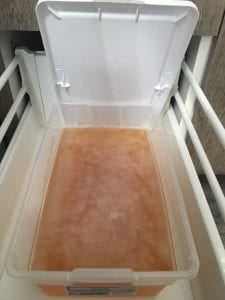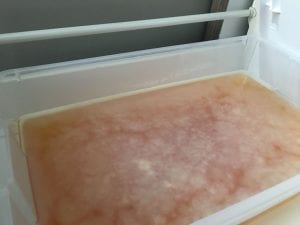- 1) How do you as an artist/designer feel that systems thinking and mapping can help you in skillfully and creatively meet the challenges presented by the topics we have covered in class so far? (Sixth Extinction, Great Acceleration, Long Life Design and the Anthropocene).
I think besides the topics already covered so far, systems thinking and mapping helps organizing the whole process and everything that’s involved on the making of a new product/piece. The way we’re able to assimilate information through this type of organization might be helpful because we’re able to look at the process with a broader view and analyze every system that’s affected by the making of the product. By knowing and analyzing that, we can know exactly what to do and what to avoid to make the whole process more sustainable and environmental friendly.
- 2) Start your research for your Systems Map/Model. Decide on your object and post a list of at least 20 systems you will include in your systems map. These 20 systems should include:
What locations/geographic regions are interconnected through the process of making this object? What materials are synthesized to create it? What different timescales are interconnected through its production? What feedback loops and causality does its existence create for humans, air and water systems? What new systems might emerge from this object’s interaction with others systems over time? Which systems might be affected by the Anthropocene/climate change?
Draw and post a rough sketch of your design plan. What media will you use (Illustrator, 3D model etc.)?
Locations interconnected: Brazil, India, China, UK, United States.
Materials synthesized: vegan leather, velvet fabric, chipboard
Jewelry box Product lifecycle
(also known as materials economy system)
Extraction
all materials mainly produced in China.
Materials: vegan leather, velvet fabric, chipboard.
Production
Vegan leather: presents economic and environmental challenges, complicated chemistry involved in the process.
Velvet: made through waving techniques.
Chipboard: trees are cut downs and taken to the paper mill, pulp is extracted, dried and flattened to then make the chipboard.
Distribution
All three materials are distributed worldwide. and are all easily accessible.
Vegan Leather: Mainly distributed to big fast fashion companies such as Zara.
Chipboard: mainly distributed to big industrialized food companies and it’s used for items such as cereal boxes and beverage cartons.
Velvet Fabric: The specific type used on the box is a cheaper version of the fabric and it is also mainly distributed to fast fashion companies.
Consumption
Vegan Leather: mainly bags, shoes, belts and jackets.
Velvet Fabric: Clothing, carpets.
Chipboard: Industrialized food packages.
Disposal
Most Velvet materials are recycled into jewelry box lining.
Used chipboard and cardboard are mixed with virgin fibers and made into recycled cardboard .
Vegan leather can take a really long time breakdown because of the complex chemistry involved in the process and it’s hard to recycle.
 this is a rough sketch of my map, I ‘m probably using illustrator.
this is a rough sketch of my map, I ‘m probably using illustrator.
- 3) Post a works-in-process image of your kombucha leather. How is the project going? Do you see growth? Please note, if you don’t see growth, check out a heat mat from the Making Center or move your project to a warmer location.
I think the project is working, I do see growth.

